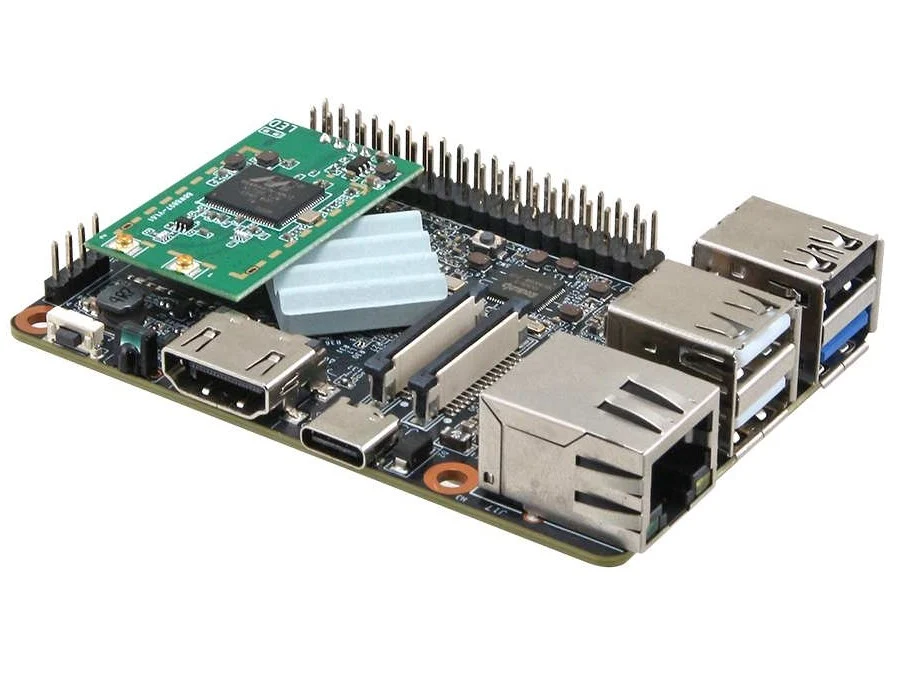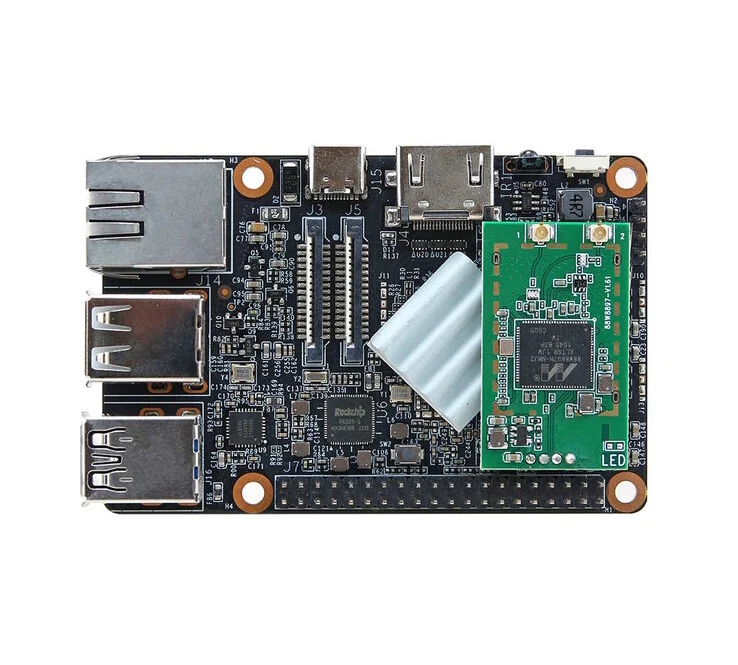Key Takeaways
1. The ArmSoM-CM1 is a single-board computer that includes multiple connectors such as MIPI DSI, USB-C, and GPIO headers.
2. It features an RK3506J SoC with three Cortex-A7 cores and one Cortex-M0 core, along with options for 256 or 512 MB of NAND storage and DDR3L RAM.
3. The board measures 70 x 42 millimeters and is designed to work with a carrier board for additional functionality.
4. An expansion board, CM1 IO, is available, providing two extra USB 2.0 ports, two Ethernet ports, WiFi 5, and Bluetooth 4.2.
5. The CM1 board is priced at $15, while the kit with the expansion board costs $28.50, with varying shipping costs and delivery times.
We’ve shared details on many single-board computers at Notebookcheck, and the Raspberry Pi 5 is likely the most well-known among them. The Raspberry Pi also comes in a Compute Module version, which is smaller and designed to work with a specific circuit board, but it lacks the usual connections found on a standard single-board computer.
Features of ArmSoM-CM1
The ArmSoM-CM1 is another single-board computer that can be paired with a carrier board, but it already includes multiple connectors. These consist of MIPI DSI with two lanes for video output, a USB-C port for power, and a microSD card slot. Additionally, there are two GPIO headers: one has 44 pins, while the other has 40 pins. The main chip is an RK3506J SoC, which features three Cortex-A7 cores and one Cortex-M0 core, along with either 256 or 512 MB of NAND storage and 256 or 512 MB of DDR3L RAM. The board’s size is 70 x 42 millimeters.
Expansion and Connectivity
This single-board computer is also available with a CM1 IO hardware interface, an expansion board that measures 100 x 70 millimeters and includes two extra USB 2.0 ports. Other specifications include two Ethernet ports that can handle a maximum data transfer rate of 100 Mbit/s, WiFi 5, and Bluetooth 4.2. The price for the CM1 board is set at $15, and the kit that includes the expansion board is available for $28.50. Shipping costs and delivery times will vary based on where the buyer is located.
Source:
Link




















